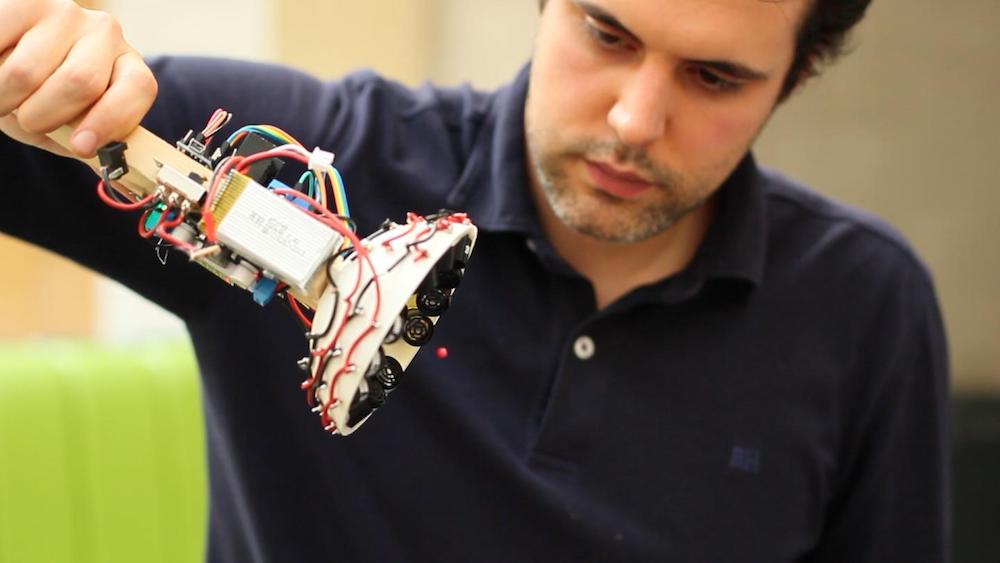
Build Your Own Death Star: How to 3D Print a Real-Life 'Tractor Beam'

Ever wanted to be Darth Vader? Good news: You can now bring "Star Wars" to life with an actual "tractor beam" to move small objects using sound waves, in the comfort of your own home — at least if you own a 3D printer.
A team of physicists, led by research assistant Asier Marzo of the University of Bristol in the United Kingdom, has released instructions in the journal Applied Physics Letters and on YouTube for how to create a plastic tractor-beam device. When sound waves travel through the device — a collection of carefully calibrated tubes — they become organized in such a way as to form a true tractor beam. This acoustic beam can pull tiny objects, like beads or even small insects, toward it using only the power of sound.
"Previously, we developed a tractor beam, but it was very complicated and pricey because it required a phase array, which is a complex electronic system," Marzo said in a statement. "In this paper, we made a simple, static tractor beam that only requires a static piece of matter." [10 Futuristic Technologies 'Star Trek' Fans Would Love to See]
True tractor beam
The simple device is an advance of sonic levitation — the method of using the pressure of sound waves to move objects. It's very easy to push particles away with sound waves, Marzo said, but pulling a particle with a tractor beam is much harder.
"The most important thing is that it can attract the particle towards the source," he said.
Fittingly, the 3D-printed tractor beam device looks like half of the Death Star from the "Star Wars" films. A printed bowl is fitted with an array of different-sized tubes, through which sound waves travel and are directed. This "metamaterial" can hold a small fly in place, as demonstrated by a highlight video.
The rest of the device is made from standard electronics and open-source hardware components from the supplier Arduino.
Sign up for the Live Science daily newsletter now
Get the world’s most fascinating discoveries delivered straight to your inbox.
"The components are very simple, like an Arduino [board] and a motor driver, and everything can be bought on Amazon for less than 50 British pounds [about $70]," [Marzo said.
Manufactured microgravity
The tubes in the tractor-beam device were a challenge to develop because they had to work despite the low precision of at-home 3D printers, Marzo said. The team developed three versions of the tractor beam, each of which can manage different wavelengths of sound to trap objects of varying sizes. (A few millimeters is the upper limit in size right now, even for devices used in laboratories.)
The tractor beam could be useful for studying cells and other biological samples in microgravity — experiments that are now frequently done in space, Marzo said.
"Recently, there have been several papers about what happens if we levitate an embryo. How does it develop? Or what happens if we levitate bacteria?" he said. "For instance, they discovered Salmonella is three times more [virulent] when it's levitated. Certain microorganisms react differently to microgravity."
Original article on Live Science.

Stephanie Pappas is a contributing writer for Live Science, covering topics ranging from geoscience to archaeology to the human brain and behavior. She was previously a senior writer for Live Science but is now a freelancer based in Denver, Colorado, and regularly contributes to Scientific American and The Monitor, the monthly magazine of the American Psychological Association. Stephanie received a bachelor's degree in psychology from the University of South Carolina and a graduate certificate in science communication from the University of California, Santa Cruz.










